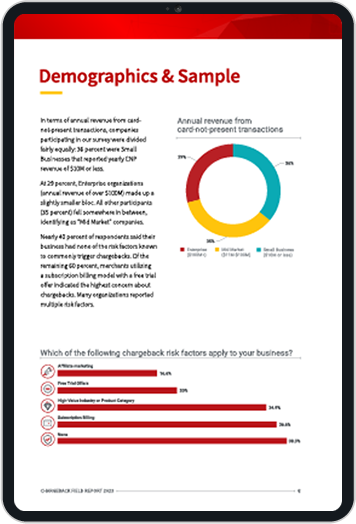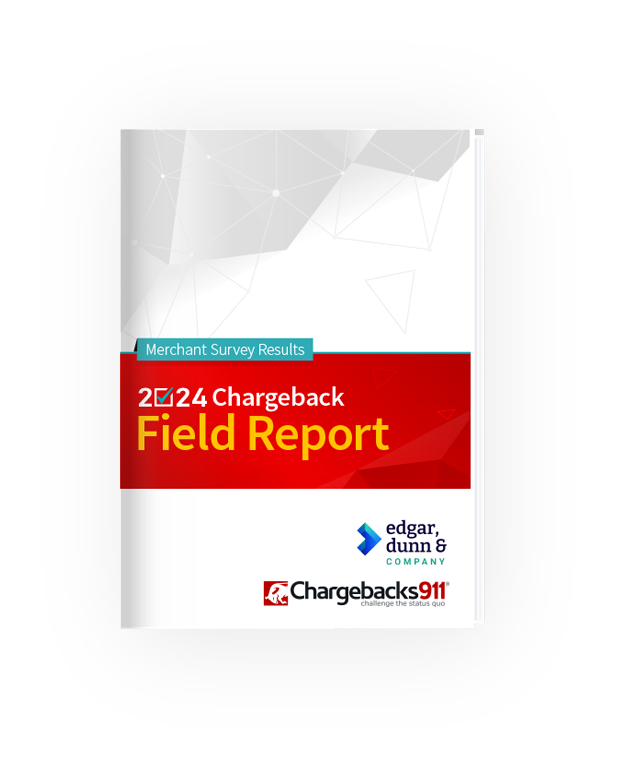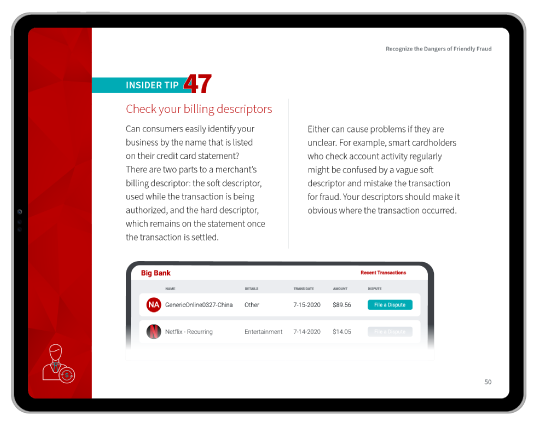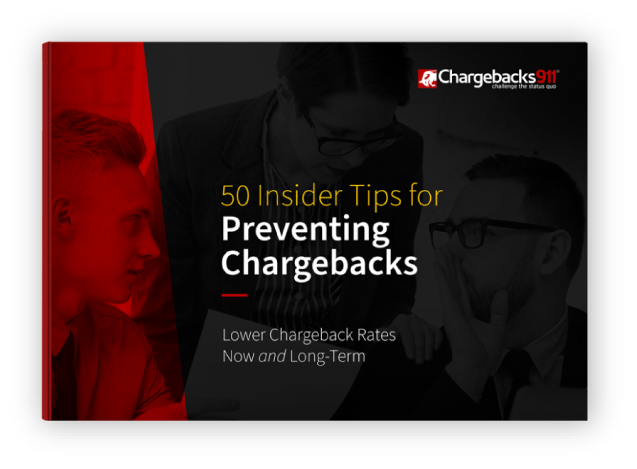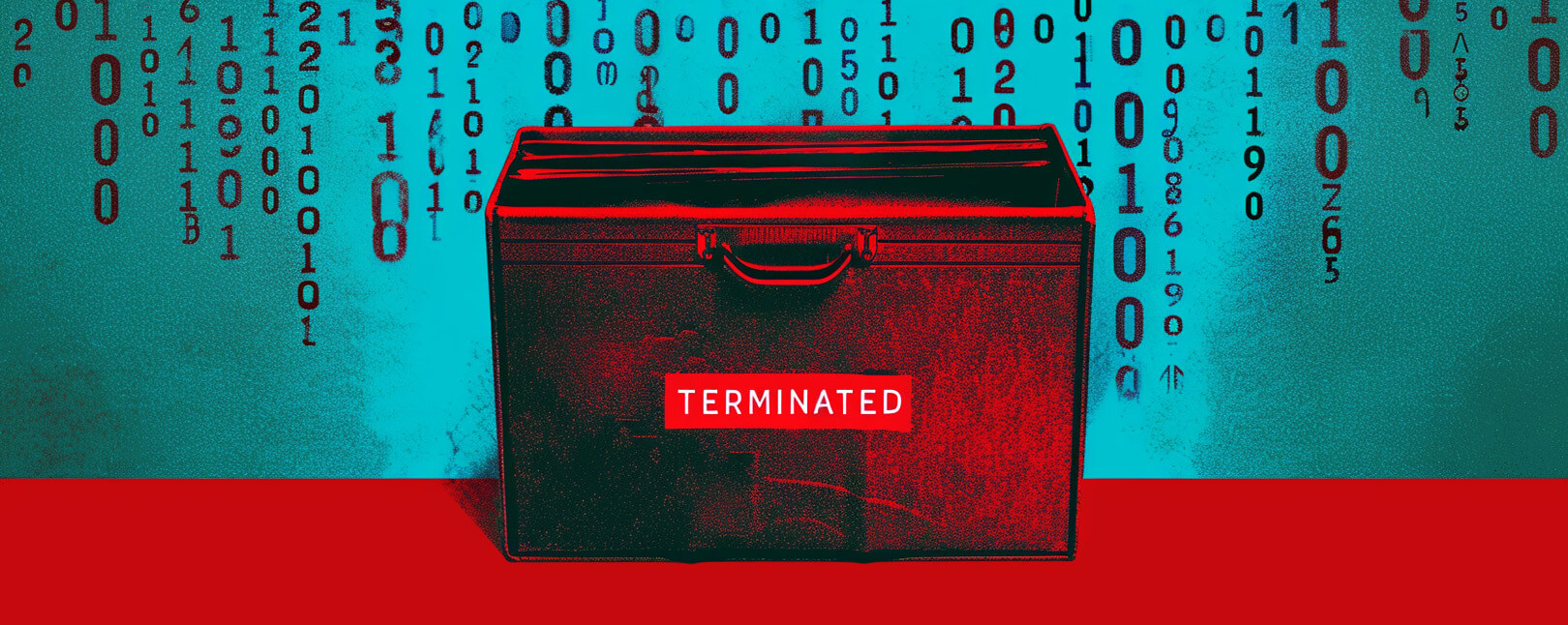High-Risk Credit Card Processing: The Best Service Providers of 2024
Ever feel like you’re paying more for your credit card processing than other merchants? There might be a reason for that.
In the world of credit card processing, there’s “high risk,” and then there's everybody else. Certain factors get you slapped with a “high-risk” label. That will bring fun perks like higher fees, more restrictions, and limited provider options.
Some merchants offering subscriptions or dealing with high-ticket items may be considered high-risk just because of their business model. Others may find themselves stuck in the high-risk trap for a different reason (usually excessive chargebacks).
In this post, we’re discussing the pros and cons of high-risk credit processing. We’ll also hook you up with a list of top-rated high-risk payment processors of 2024, which should help you find the best fit for your business.
Recommended reading
- Merchant Account Reserves: What You Need to Know in 2024
- High-Risk Merchant Accounts: The Best Providers of 2024
- What is a High-Risk Business? Why Does it Matter?
- What is the Amex Fraud Full Recourse Program?
- How the Terminated Merchant File Can Affect Your Business
- Visa Dispute Monitoring Program: What is the VDMP?
What is High-Risk Credit Card Processing?
- High-Risk Credit Card Processing
High-risk credit card processing is a subset of merchant payment processing services, targeted at merchants considered “high risk” by conventional banks. The processor will generally allow for greater risk exposure in exchange for higher fees.
[noun]/hī • risk • kre • dət • kard • prä • ses • iNG/
Merchant processing is inherently risky. But, merchants that are viewed as being more susceptible to chargebacks are flagged as being high risk.
It could be due to the type of product or service being sold, or the average dollar amount for monthly sales. It could also be the regions or countries in which you do business. Any of these factors could make you more susceptible to fraud or abuse, as well as chargebacks resulting from that activity.
As a merchant, you'll ultimately pay the price for chargebacks. Processors and banks, though, are also at risk. In fact, the average chargeback will cost your bank $26 per incident due to processing costs and fees assessed by the card networks. This adds up over time; banks and processors could be open to millions of dollars in potential losses each year.
Providers of high-risk credit card processing services are willing to take on that added risk. They’ll let you take on greater risk exposure than a bank or processor would typically allow. But, as we’ll see in the next section, this freedom comes at a cost.
What Makes a Business “High Risk?”
Being branded a high-risk merchant doesn’t mean your business is untrustworthy, nor that customers should shy away from you. What it does mean is that the entities who proved credit card processing expect to see a higher rate of disputes filed against your store. The reasons could vary, including:
- Your industry or vertical
- The types of products or services you sell
- You business model (subscription-based, for example)
- Average dollar amount of sales
- The country or regions where you do business
Any of these factors can make your business more prone to chargebacks. On the other hand, merchants with a history of excessive chargebacks can also be deemed high risk, regardless of product vertical or business type. Their chargebacks can be due to anything from internal policy errors to friendly fraud.
Even things like your business’s credit score or how long you have been in business can also have an impact. To the processor, the source of your potential future chargebacks is immaterial. Risk is solely estimated based on how many chargebacks they expect you to have.
See a partial list of high-risk verticalsPros and Cons of High-Risk Credit Card Processing
We’re not saying that high-risk processing is desirable, per se. Becoming a high-risk merchant shouldn’t be a business goal or anything.
What we are saying is that using a high-risk processor can be a viable path forward. In some cases, it may be the only option available, but in other situations, it can be a highly profitable way to conduct business. That’s why many eCommerce merchants actually prefer it over conventional payment processing.
How do you know which is best for you? Let’s look at some of the pros and cons of working with high-risk credit card processing companies. This will give you a better impression of what to expect:
Pro
Global Expansion
Standard processors can restrain or prohibit merchants from transacting in multiple currencies. They may also restrict you from selling to customers outside of regions like the United States or Western Europe.
The earning potential tied to international sales can make high-risk credit card processing seem more appealing.
Con
Higher Service Costs
All processors work on the assumption that high-risk clients will inevitably produce more chargebacks. They may require higher setup charges and impose larger monthly fees to offset this risk. The ongoing cost of processing will also be more than what merchants would otherwise pay.
These excessive charges can make high-risk processing less appealing.
Pro
Billing Flexibility
Processors can limit the amount of revenue standard merchants generate via subscription billing. They can also set limits on the types of products or restrict high-ticket sales.
In contrast, high-risk processors can allow for increased flexibility in billing practices.
Con
Merchant Account Reserves
Many high-risk payment processors require a merchant account reserve. This is a non-interest-bearing savings account used by the acquiring bank as a type of insurance against chargebacks.
Merchants won't be able to access the money in reserve until 180 days after the initial transaction. This delay can make high-risk business untenable, even without chargebacks.
Pro
More Business Types
There is a long list of products and services that credit card networks see as too risky for standard merchants. Many travel, telemarketing, gaming, tobacco, and pharmacy businesses will be prevented from working with a traditional credit card processor.
With a high-risk merchant account, however, you can sell products in just about any merchant category code (MCC).
Con
Reputational Damage
Working with a high-risk payment processor may be your best option, but you should use caution when deciding to go this route. If your business is labeled "high-risk" due to excessive chargeback issuances, you may be unable to engage with traditional payment service providers in the future.
Merchants who use a high-risk processor can often maintain a higher chargeback ratio without risking the loss of their processing. This can be appealing to merchants who have a higher-than-average chargeback liability.
Pro
Higher Chargeback Threshold
Standard merchants must keep their chargeback issuances within a narrow, acceptable range. Otherwise, they could lose their ability to process payments, and can end up on the MATCH List.
The earning potential tied to international sales can make high-risk credit card processing seem more appealing.
Con
Higher Chargeback Fees
A high-risk payment processor may be willing to work with merchants with high chargeback rates, but this willingness comes at a cost. The processor will usually assess higher fees for each individual dispute.
These fees add up quickly and are a major disadvantage of high-risk processing.
The Best High-Risk Credit Card Payment Processors
So by this point, you should have an understanding of what high-risk processing is, including some of the pros and cons. The thing is, there are dozens of high-risk credit card processing services out there. Where do you even start to look?
Not to worry; we’ve got your back. We’ve already done the work of compiling some of our “best of the best” high-risk credit card processors of 2024 below (we’re not here to play favorites; the list is arranged in alphabetical order):

Durango Merchant Services
Durango Merchant Services is highly regarded for its exceptional customer support. They specialize in finding accounts for merchants with poor credit or excessive chargebacks. Durango supports transactions in various currencies, including crypto. The company also offers fraud protection and gateway integration.
Partial List of Verticals & Product Focus:
International, offshore, credit repair, bad credit, vaping & supplies, fantasy sports, nutraceuticals, MLM, membership/subscription, travel, dating
Durango Merchant Services Pricing:
While Durango does not advertise its pricing, custom quotes show that the monthly fee starts at $10 and access to the payment gateway can cost an additional $10–$15 per month.
Pros:
- Serves high-risk companies globally
- Offers fraud protection services
- Supports processing for cryptocurrency transactions
- High customer reviews
Cons:
- Fee details only available by quote
- Monthly fees and minimums
- Doesn’t support all high-risk businesses

Easy Pay Direct
Easy Pay Direct offers an exclusive payment gateway designed to be user-friendly. The company’s unified solution handles high-volume transactions and multiple merchant accounts through a single payment gateway. They also offer unlimited transactions for high-value purchases and have high customer feedback.
Partial List of Verticals & Product Focus:
Information products, supplements, CBD, SaaS, general eCommerce, MLM, adult industry, nutraceuticals, alcohol, firearms & ammunition, high-ticket
Easy Pay Direct Pricing:
There are no specific fees available, but historically there has been a one-time $99 setup fee, and monthly account fees starting at $24.95/month.
Pros:
- Transparent pricing
- Free virtual terminal
- Extensive third-party integrations
Cons:
- US & Canada only
![]()
Fasto Payments
Fasto Payments provides an "all-in-one" solution for high-risk merchants. They connect customers with over 100 different card processors, offering chargebacks alerts, cryptocurrency processing, and more than 20 alternative and local payment methods. They also provide live 24/7 support for customers.
Partial List of Verticals & Product Focus:
Adult entertainment, CBD products, cryptocurrencies, dating, financial services, gambling, gaming, hospitality, travel.
Fasto Payments Pricing:
Fasto has no online pricing information.
Pros:
- “All in one” services
- 24/7 customer support
- Chargeback alerts
Cons:
- Website does not disclose pricing
- Website does not disclose pricing

Host Merchant Services
US-based Host Merchant Services (HMS) offers interchange-plus pricing exclusively and are known for their customer care. The company is an excellent option for companies with monthly sales exceeding $10,000. Clients enjoy low interchange fees and pay-as-you-go contracts.
Partial List of Verticals & Product Focus:
Adult entertainment, CBD products, cryptocurrencies, dating, gambling, travel, pawn shops, gambling, loan modification companies
Host Merchant Services Pricing:
HMS uses interchange-plus pricing exclusively, offering month-to-month billing with no early termination fees, no setup or application fees, and no monthly minimums.
Pros:
- Wide range of integrations
- Excellent customer service
- Transparent pricing
Cons:
- High startup costs
- Monthly fees
- Limited subscription management features
- Only works for merchants based in US

Inovio
Inovio emphasizes the flexibility and seamless integration of their platform, which works with multiple payment technologies. Their platform combines essential features with extensible data and clean interface to make the gateway experience frictionless.The platform also includes adaptable APIs.
Partial List of Verticals & Product Focus:
Adult, bail bonds, coaching, collections, dating, eBooks, fantasy sports, firearms & ammunition, gaming, nutraceuticals, telemedicine, travel.
Inovio Pricing:
For the most part, Inovio does not publish rates on their website. They do mention a separate fee schedule that is available once terms have been negotiated. This suggests a tiered or tailored pricing model.
Pros:
- Quick setup
- Dedicated relationship manager
- Ability to keep cards on file
Cons:
- Fees aren’t listed online
- Early termination fee
- Limited integrations

Instabill
Instabill specializes in international high-risk accounts which can be set up to accept over 150 major currencies. Other services include EMV card readers and swipers, mobile payments, and ACH processing, plus eCommerce solutions including virtual terminals and payment gateways.
Partial List of Verticals & Product Focus:
Adult, bail bonds, dating, CBD/hemp, gaming, gambling, financial consulting, vaping/eCigarettes, nutraceuticals, telemedicine, travel.
Instabill Pricing:
Instabill offers a Merchant Account Fees page explaining why it can’t give you a firm quote without more information. Instabill does not require a fixed contract length.
Pros:
- Fast application process
- Highly rated tech support
- Fraud prevention tools
Cons:
- Costs may be higher than other providers
- Typically requires a rolling reserve
- Higher termination fees and fees for withheld funds

PaymentCloud
PaymentCloud is another high-risk processor known for exceptional customer service, with direct involvement and guidance both during and after onboarding. The company can process payments via credit card, ACH, eCheck, or cryptocurrency, as well as a range of transaction modes.
Partial List of Verticals & Product Focus:
CBD oil, firearms & ammunition, adult entertainment, credit repair, bad credit, vape/eCigarettes, airlines, tax preparation.
PaymentCloud Pricing:
PaymentCloud doesn't offer a uniform fee structure like many providers catering to high-risk merchants. You’re likely to have a monthly minimum processing charge of around $25, but minimal other fees compared to some other providers.
Pros:
- Dedicated account manager
- Same-day setup
- No cost-credit card processing
Cons:
- Fees aren’t listed online
- Monthly volume limit
- Not for Ultra High Risk
PayKings
PayKings offer affordable merchant services, online credit card payment processing, and multiple other services to help merchants get sustainable payment processing in high risk industries. All offerings can be seamlessly integrated with the merchant’s existing platform.
Partial List of Verticals & Product Focus:
Adult entertainment, CBD, credit repair, firearms, hemp, nutraceuticals, travel, vape/eCigarette, pawn shops, collectables, dating.
PayKings Pricing:
PayKings provides customized pricing for each merchant individually. The company advertises rates “as low as 2.49%,” which usually implies tiered pricing. Amounts will vary depending on volume and vertical.
Pros:
- No setup or application fees
- Multiple currency options
- Some chargeback protection offered
Cons:
- No clear prices on website
- Early termination fee
- Some complaints of slow response
Payline
Payline believes in transparency. They were the first company to display merchant processing fees directly on their website. The company’s omnichannel solutions provide options for businesses across all industries and sizes, tailored to fit individual needs.
Partial List of Verticals & Product Focus:
Businesses with long delivery times, credit & debt relief, medical marijuana, retail cannabis, tobacco/vape, travel.
Payline Pricing:
Payline uses an “interchange plus pricing” plan due to its transparency. Customers can take advantage of the wholesale rates set forth by the card brands. Payline then adds a small service fee.
Pros:
- Competitive, transparent pricing
- No cancelation fee
- Dedicated account managers
Cons:
- Occasional complaints of unexpected fees
- Monthly fees
- Need separate plans for in-person vs. online processing
Soar Payments
Soar Payments specializes in payment solutions for hard to place merchants, especially those labeled “high risk.” The company offers merchant accounts, ACH, payment gateway, and related payment technology, along with competitive pricing, a straightforward application procedure, and outstanding customer service.
Partial List of Verticals & Product Focus:
Antiques & collectibles, CBD products, subscription/recurring payments, credit repair, fantasy sports, firearms, travel, MLM, nutraceuticals, SaaS
Soar Payments Pricing:
Soar keeps their customer fees private, but provides instant online quotes, with no offline paperwork. Online quotes are based on “industry minimum” pricing that eliminates haggling.
Pros:
- Instant online quotes
- Robust customer support based in the U.S
- Responsive customer service
Cons:
- Not global
- Does not work in certain verticals
Avoid High-Risk Processing by Controlling Chargebacks
All of the above is great if you want to work with a high-risk processor. For some merchants, it is simply their only option. That means they’re stuck with all the baggage of high risk, while enjoying few of the benefits.
If there is an upside to that, it may be that high-risk providers are also less likely to close your account because of excessive chargebacks. That’s especially important if the bulk of your chargebacks are from avoidable sources; you have more leeway to identify the problem and get those chargebacks under control.
Unfortunately, a lot of merchants don’t know where their disputes are coming from, and wouldn’t know how to mitigate the risk, anyway. If your chargeback rate is threatening to push you into high-risk territory, we can suggest a great alternative: chargeback prevention.
Chargebacks911® helps sellers in all merchant category codes, sales models, and product verticals to avoid excess chargebacks. Our platform also enables high-risk merchants to recoup revenue that would otherwise be lost to fraudulent chargebacks.
Contact us today for a free, no-obligation chargeback analysis and learn exactly how much you could be saving.
FAQs
How much does a high risk payment processor charge?
Individual rates depend on the processor, but most high-risk merchants will pay 0.5% to 1% higher than low-risk businesses. The average high-risk processing rates range from 2% to 10% or more per transaction. Providers may also charge a $10 to $50 monthly fee for high-risk accounts, and rates could fluctuate depending on the perceived risk level.
What are the disadvantages of a high-risk merchant account?
Downsides of using a high-risk merchant account include higher processing costs, required account holds or rolling reserves, and increased compliance and regulatory restrictions. Chargebacks and customer disputes may be more common in high-risk businesses, and the choices for providers will be limited.
What makes a merchant high-risk?
The high-risk label can come from a number of factors, including high transaction volume, high average ticket size, or low credit score. You may also have a historically high chargeback ratio or high potential for credit card fraud. Limited business operating history could also be a factor.


